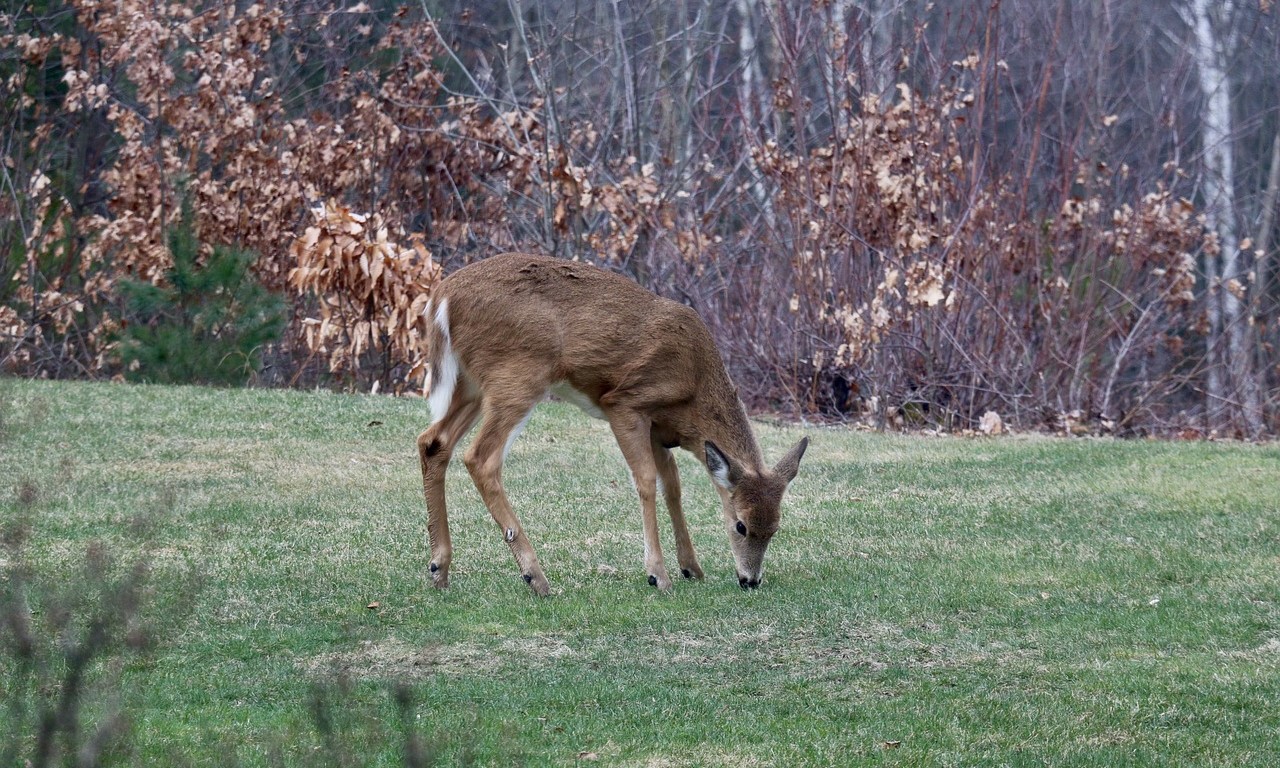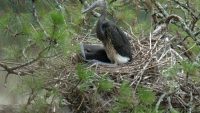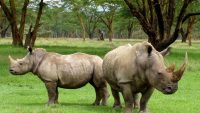White-tailed deer ( Odocoileus virginianus ) are a common and widely distributed species of deer native to the United States, Canada, Mexico, Central America, and parts of South America. Named for the distinctive white underside of their tail, which they raise as a warning signal when alarmed, white-tailed deer are known for their graceful appearance and agile movements. They are medium-sized herbivores with reddish-brown fur in the summer and grayish-brown fur in the winter, helping them blend into their surroundings.
White-tailed deer inhabit a variety of habitats, including forests, grasslands, swamps, and agricultural areas. They are highly adaptable animals and can thrive in diverse environments, from dense woodlands to suburban neighborhoods. Their diet consists primarily of vegetation, including leaves, twigs, fruits, nuts, and grasses, although they may also browse on crops and garden plants, leading to conflicts with humans in some areas.
White-tailed deer play a significant ecological role as both herbivores and prey species. They help regulate plant populations by browsing on vegetation and dispersing seeds through their feces. Additionally, white-tailed deer are an important food source for predators such as coyotes, wolves, bears, and mountain lions. Their populations are managed through regulated hunting programs in many regions to maintain ecological balance and prevent overpopulation-related issues such as habitat degradation and vehicle collisions.

Do you want to know more about white-talied deer? Here are 10 interesting facts about white-tailed deer to know more about it.
- Whitetails Can Jump High : White-tailed deer are renowned for their impressive jumping ability. They can clear obstacles up to 8 feet high and leap distances of over 30 feet in a single bound, making them highly agile and elusive prey animals.
- Antlers Shed Annually : Male white-tailed deer, known as bucks, grow and shed their antlers each year. Antler growth begins in the spring and reaches full size by late summer or early fall. Bucks shed their antlers in late winter or early spring, a process facilitated by hormonal changes triggered by increasing daylight.
- Distinctive Scent Glands : White-tailed deer have specialized scent glands located on various parts of their bodies, including their forehead, legs, and feet. These glands produce pheromones used for communication, territorial marking, and attracting mates.
- Mating Season Rituals : During the rut, or mating season, bucks engage in elaborate rituals to establish dominance and compete for breeding rights. These rituals include vocalizations, scent marking, and sparring matches where bucks lock antlers and push each other to establish hierarchy.
- Polygamous Mating Behavior : Male white-tailed deer mate with multiple females during the rut, employing a polygamous mating strategy. Dominant bucks have greater access to mates and territories, while younger or less dominant bucks may form bachelor groups or seek opportunities to challenge dominant individuals.
- Camouflaged Coat : The coat of white-tailed deer provides excellent camouflage in their natural habitat. During the summer months, their reddish-brown fur blends seamlessly with the foliage, while in winter, their grayish-brown coat helps them blend into snow-covered landscapes.
- Nocturnal Behavior : White-tailed deer are primarily crepuscular and nocturnal, meaning they are most active during dawn and dusk or during the night. This behavior helps them avoid predators and minimizes exposure to human activity.
- Excellent Swimmers : Despite their preference for wooded habitats, white-tailed deer are proficient swimmers and can traverse bodies of water with ease. They use swimming as a means of escaping predators or reaching new foraging areas.
- Communication Through Tail Movement : White-tailed deer use their tails as a form of communication. When alarmed, they raise their tails, displaying the distinctive white underside as a warning signal to other deer in the area.
- Population Dynamics : White-tailed deer populations are influenced by various factors, including habitat quality, predation, hunting pressure, and disease. Population densities can fluctuate widely from one region to another and are often managed through regulated hunting programs to maintain ecological balance and mitigate human-wildlife conflicts.
White-tailed deer, with their graceful movements, impressive athleticism, and distinctive behaviors, hold a special place in the ecosystems they inhabit. From their remarkable jumping ability to their annual antler shedding rituals, these iconic herbivores captivate the imagination and serve as both prey and keystone species in their environments. Their adaptability to diverse habitats, coupled with their role as a food source for predators, underscores their importance in maintaining ecological balance.
Yet, as human populations expand and landscapes change, white-tailed deer face new challenges, from habitat loss to vehicle collisions. Conservation efforts aimed at understanding and managing their populations are crucial for ensuring the continued health of both deer and their ecosystems. As symbols of the natural world’s resilience and beauty, white-tailed deer remind us of the interconnectedness of all living things and the importance of preserving the wild spaces they call home.



